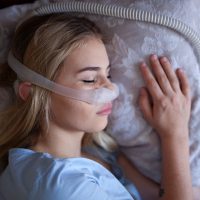Did You Rely On A CPAP Machine That Made You Sick?

Sleep apnea: it’s a condition that affects millions of people, many of whom literally stop breathing while asleep. It’s a frightening diagnosis, but one that has a pretty simple intervention: a simple medical device that ensures consistent breathing throughout a sleep cycle. What a relief, right? You bet– unless the use of the device results in dreadful side effects instead.
Enter Philips Respironics
Philips Respironics marketed and sold medical devices as a way to mitigate the dangers of sleep apnea, and patients were likely elated to have an intervention to address their breathing issues. Across the country, Phillips CPAP machines and respirators were prescribed for patients. Regrettably, millions of the devices were defective. Worse yet, although the risks were well known and documented, the machines were not recalled for over a decade.
Health Consequences
Philips Respironics spent years soaking up the profits related to these devices while patients who were using them experienced awful and inexplicable health consequences, including respiratory infections, kidney issues, liver problems, various cancers, and more. Even deaths have been associated with the devices, although those reports arrived long after the events in question, and we’re not sure just how many fatalities are linked back to the respirators. Some medical professionals have concluded that deteriorating foam could be the cause of these and other ailments. Philips admitted that the risks associated with their ventilators include exposure to toxic, carcinogenic materials back in 2021, and the company initiated the recall process. But that was years after thousands of complaints had been filed with the FDA (something that is required for companies that provide medical equipment). In defending their tardy reporting, Phillips postulated that initially they didn’t believe the complaints were serious enough to report, and they should be credited with ultimately turning the concerns into the FDA–with dates modified after the fact to keep them in compliance with government regulations. While both Phillips and the FDA claim to have the uniform goal of protecting patients’ health as their top priority, millions of these dangerous machines were out in homes, hospitals, or care centers, causing untold suffering to Americans.
An FDA Failure
Although the FDA was aware that the breathing machines sent fumes and industrial foam particles that were embedded in the machines right into patients’ lungs, nothing was done to alert patients or their medical support teams. Concerns about black powder and loose, tangled foam in the ventilators were reported with virtually no response for more than ten years. As far back as 2011 the complaints about particulates and dust were submitted to the FDA, yet there is no clear evidence that anyone at the agency read the reports, let alone acted on them. If investigative reporting hadn’t uncovered the whole mess, we might still be in the dark about it.
Legal Recourse
If you or a loved one used a CPAP device by Philips Respironics and have since suffered ill-effects that could be a result of the deteriorating foam, you may be entitled to significant damages to address the medical costs, lost wages, pain and suffering and more. To discuss your situation, schedule a confidential consultation with an experienced Baltimore personal injury attorney at the office of The Law Office of Hasson D. Barnes today.

